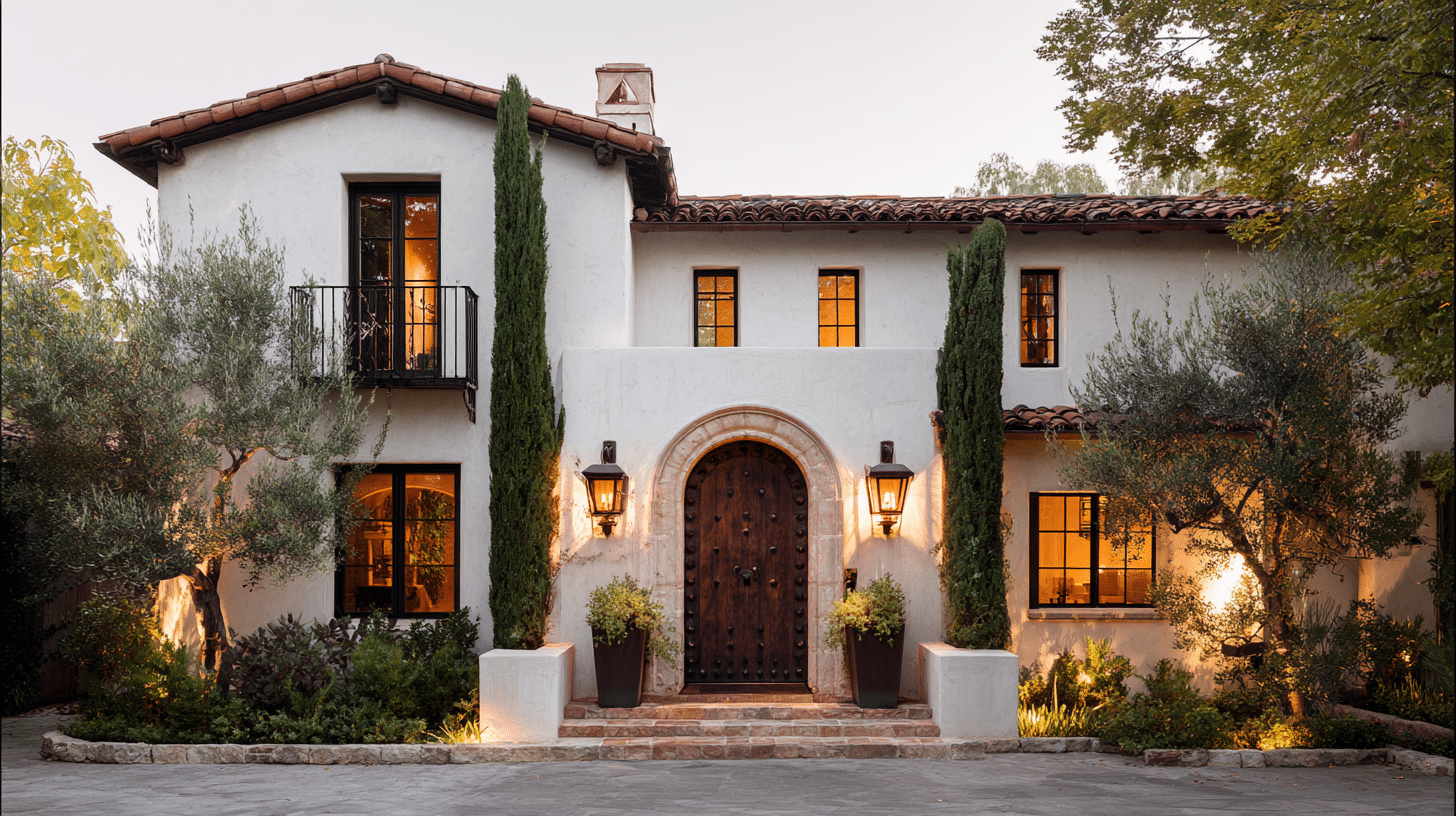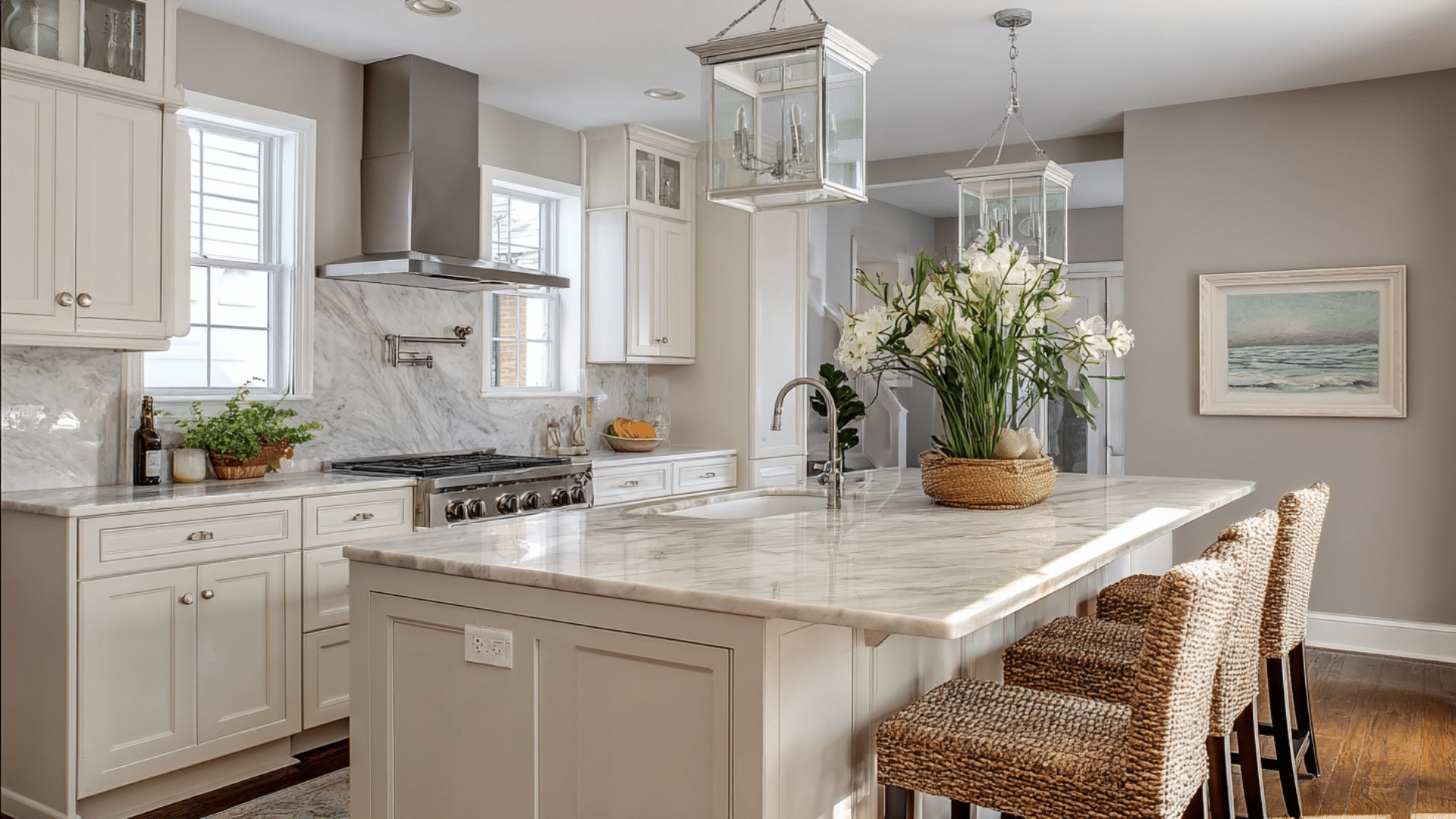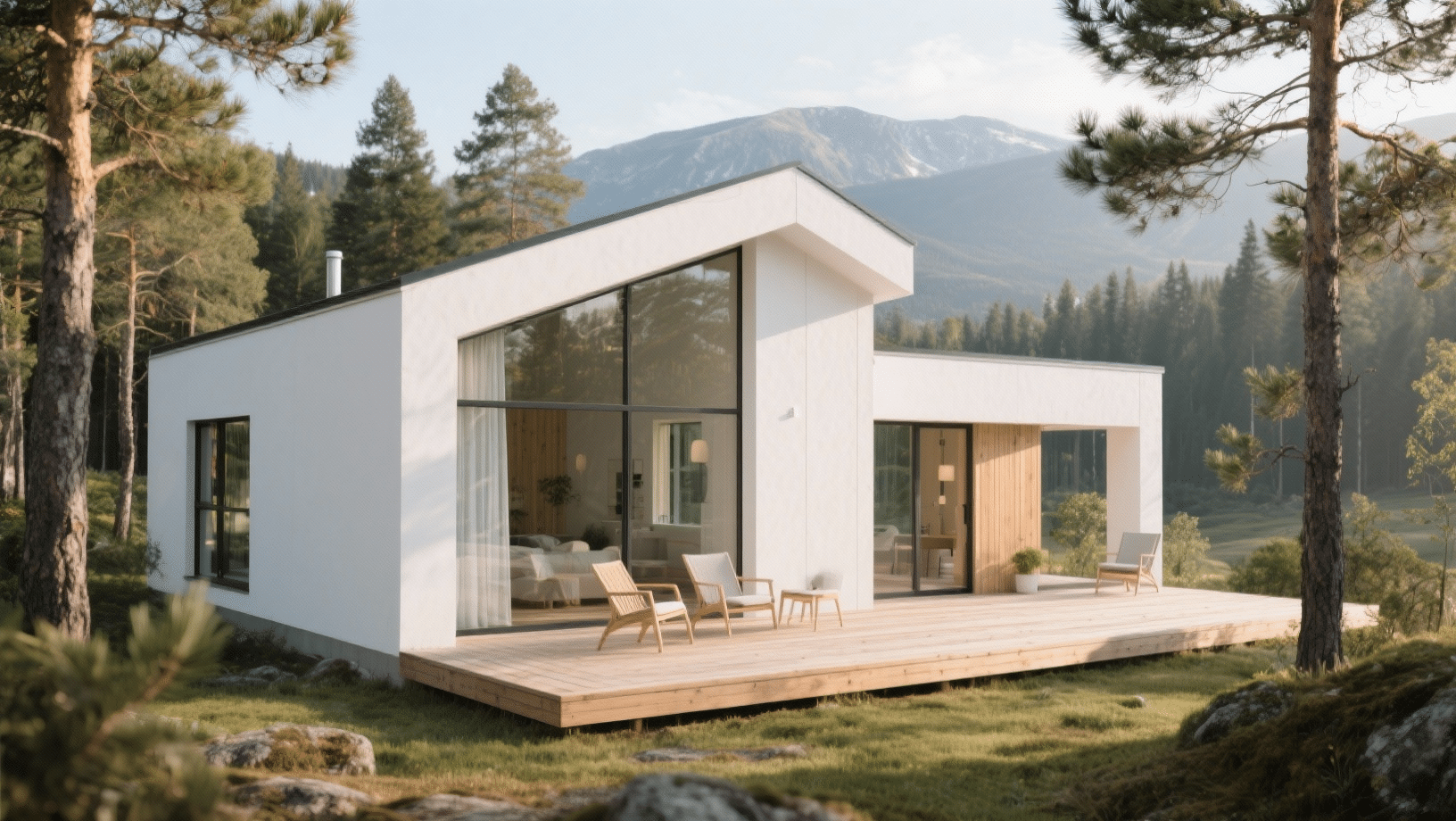Modern Spanish-style homes mix the charm of old Spanish buildings with clean, simple shapes and modern comforts.
This style creates warm, open spaces that highlight natural materials like wood, stone, and clay.
This guide shares key elements of modern Spanish style and ideas for both the inside and outside of your home to help you create a beautiful, welcoming house.
Spanish Architecture and Its Defining Features
Spanish-style architecture is a rich style shaped over centuries by cultural exchange and history.
It began with Roman influences and grew through Moorish, Gothic, Renaissance, and Baroque styles. This blend creates bold lines, natural materials, and detailed ornamentation.
Key features include stucco walls and red clay tiles that manage heat, arches, and courtyards for open-air living, and decorative tiles with wrought iron accents that add charm.
Spanish design often blends indoor and outdoor spaces with balconies, patios, and gardens. Its rooflines and woodwork add warmth and depth, making homes practical and beautiful.
Overall, this architecture tells stories of culture and craftsmanship through its unique, classic style.
History and Evolution
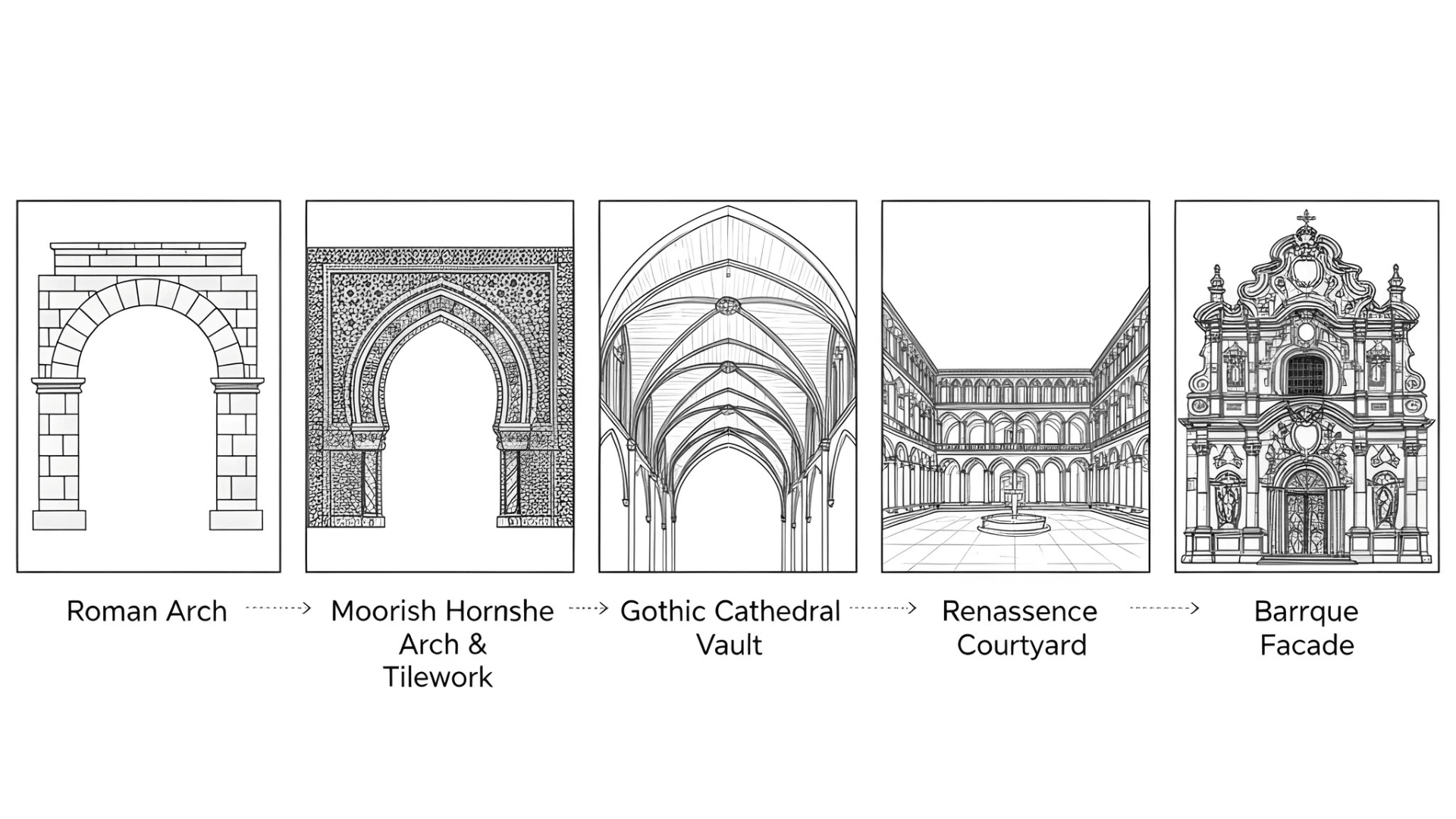
The story of Spanish architecture begins with ancient Roman foundations, followed by centuries of Moorish influence that defined southern Spain through landmarks like the Alhambra in Granada.
The Reconquista brought Gothic cathedrals and churches, while the Renaissance introduced proportion and symmetry through palaces and civic buildings. Spain’s Baroque period emphasized grandeur, as seen in Madrid and Seville.
As Spain extended its empire, Spanish Colonial architecture carried these influences across the Americas through mission churches and haciendas, marked by stucco, arches, and courtyards.
Today, Spanish design influences continue through revival architecture and contemporary houses, blending rustic tradition with modern function.
Different Styles and Characteristics
Spanish homes are known for their everlasting charm and variety, blending tradition with beauty. Each style offers unique features that highlight Spanish design.
1. Spanish Colonial Homes
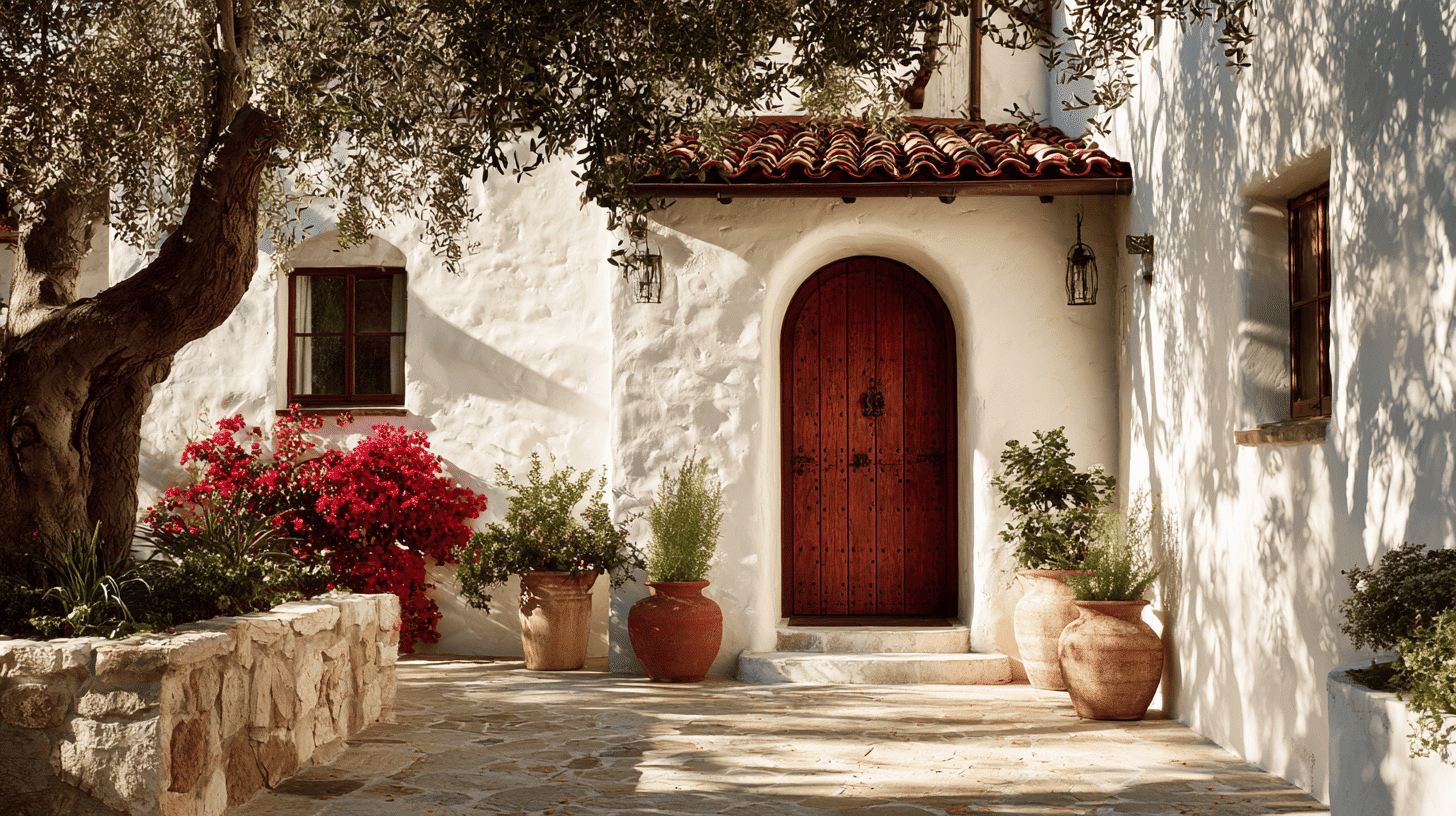
These homes are simple yet elegant, reflecting early Spanish influence with modest yet charming details.
- Whitewashed stucco walls reflect sunlight and keep interiors cool.
- Red clay tiled roofs add rustic warmth and durability.
- Compact courtyards create private outdoor spaces for relaxation.
2. Mission-Style Homes
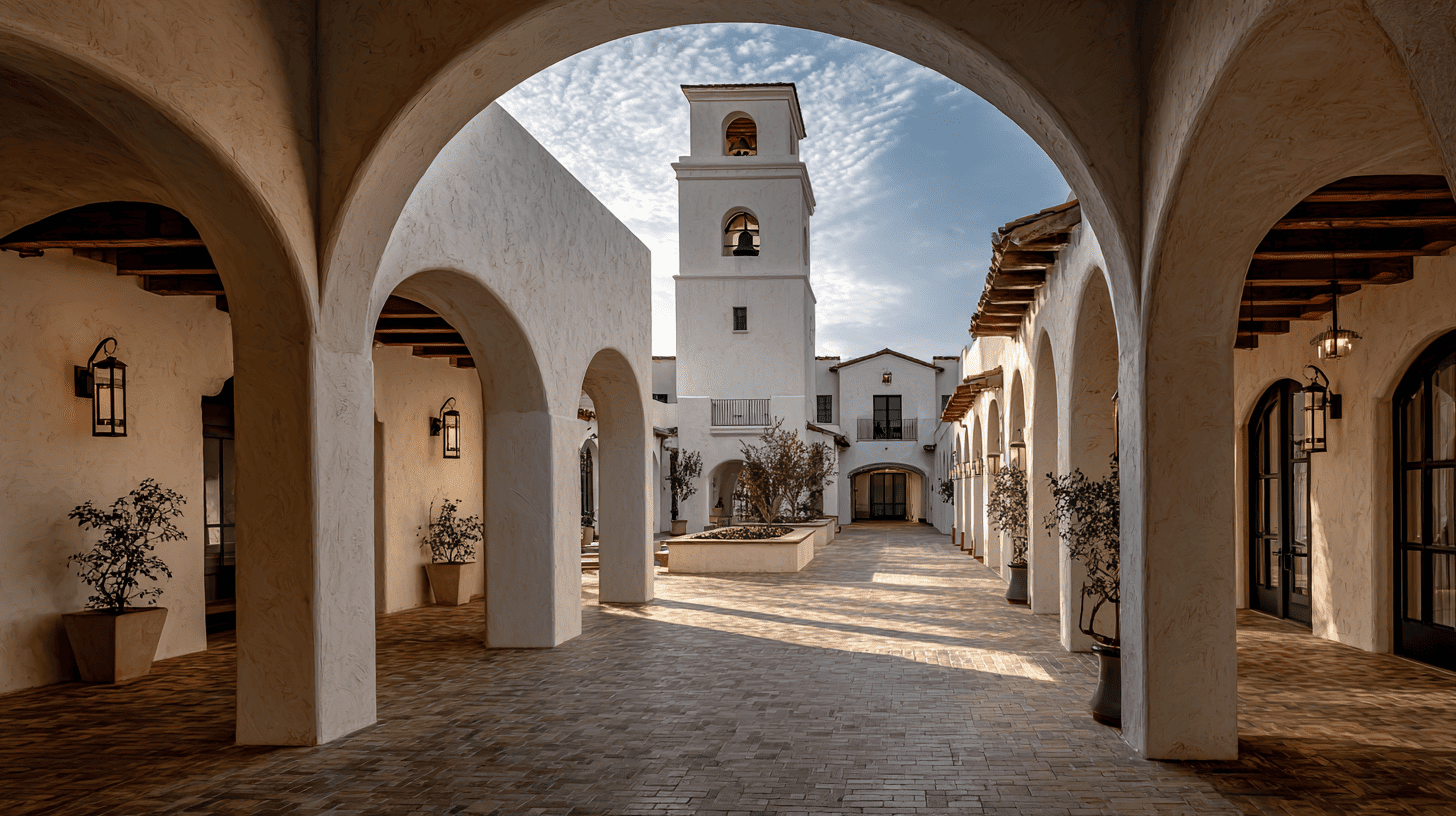
Inspired by historic Spanish missions, these homes bring strength and heritage into modern communities.
- Bell towers add iconic silhouettes to exteriors.
- Thick walls provide insulation and a solid presence.
- Arcaded walkways offer shaded passages with visual rhythm.
3. Mediterranean Revival Homes
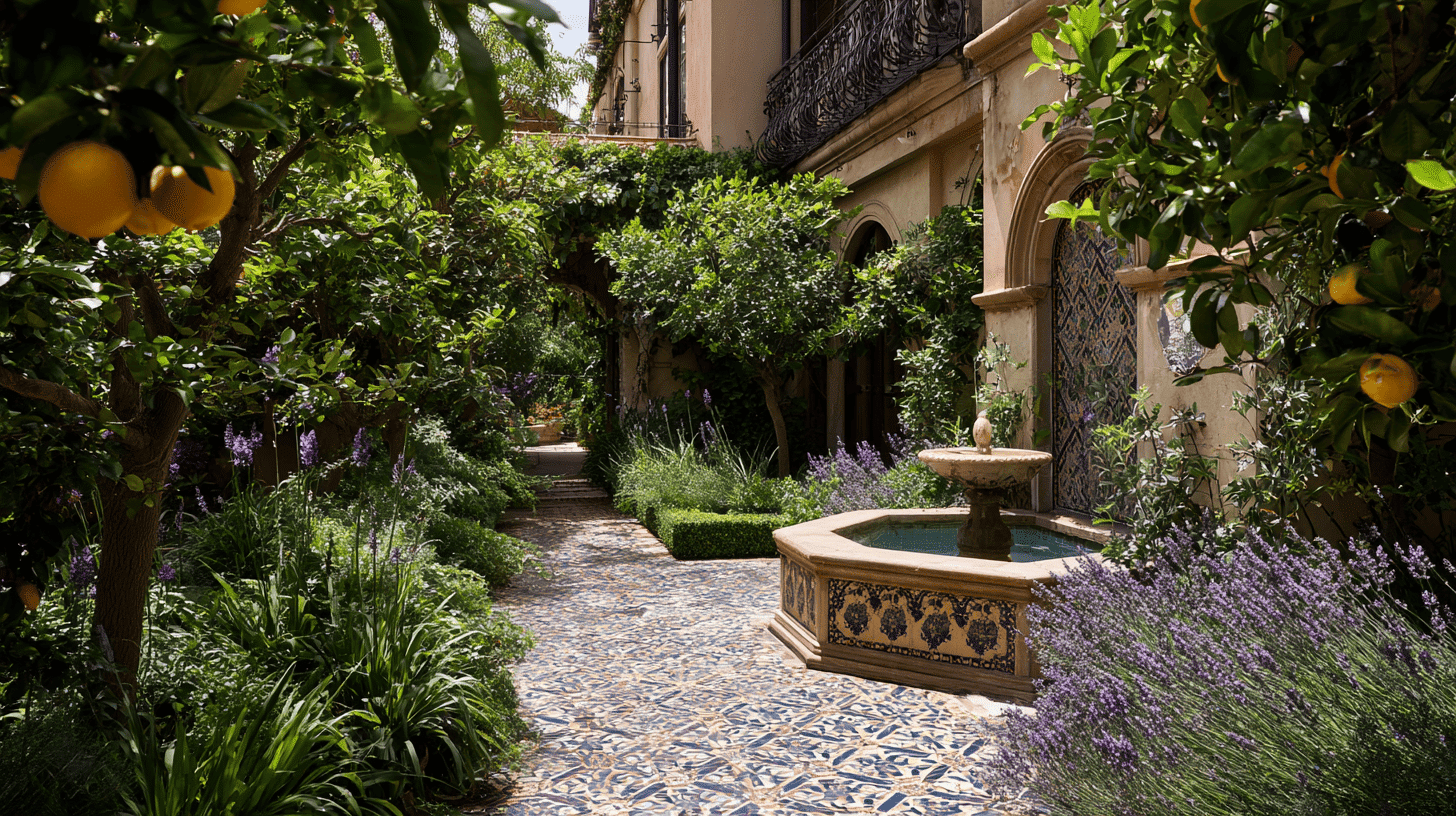
This style combines Spanish and Italian touches, blending elegance with lush outdoor living.
- Wrought iron balconies add romance and artistry.
- Colorful tiled floors bring cultural flair and durability.
- Gardens with fountains create serene, scenic retreats.
4. Modern Spanish Homes
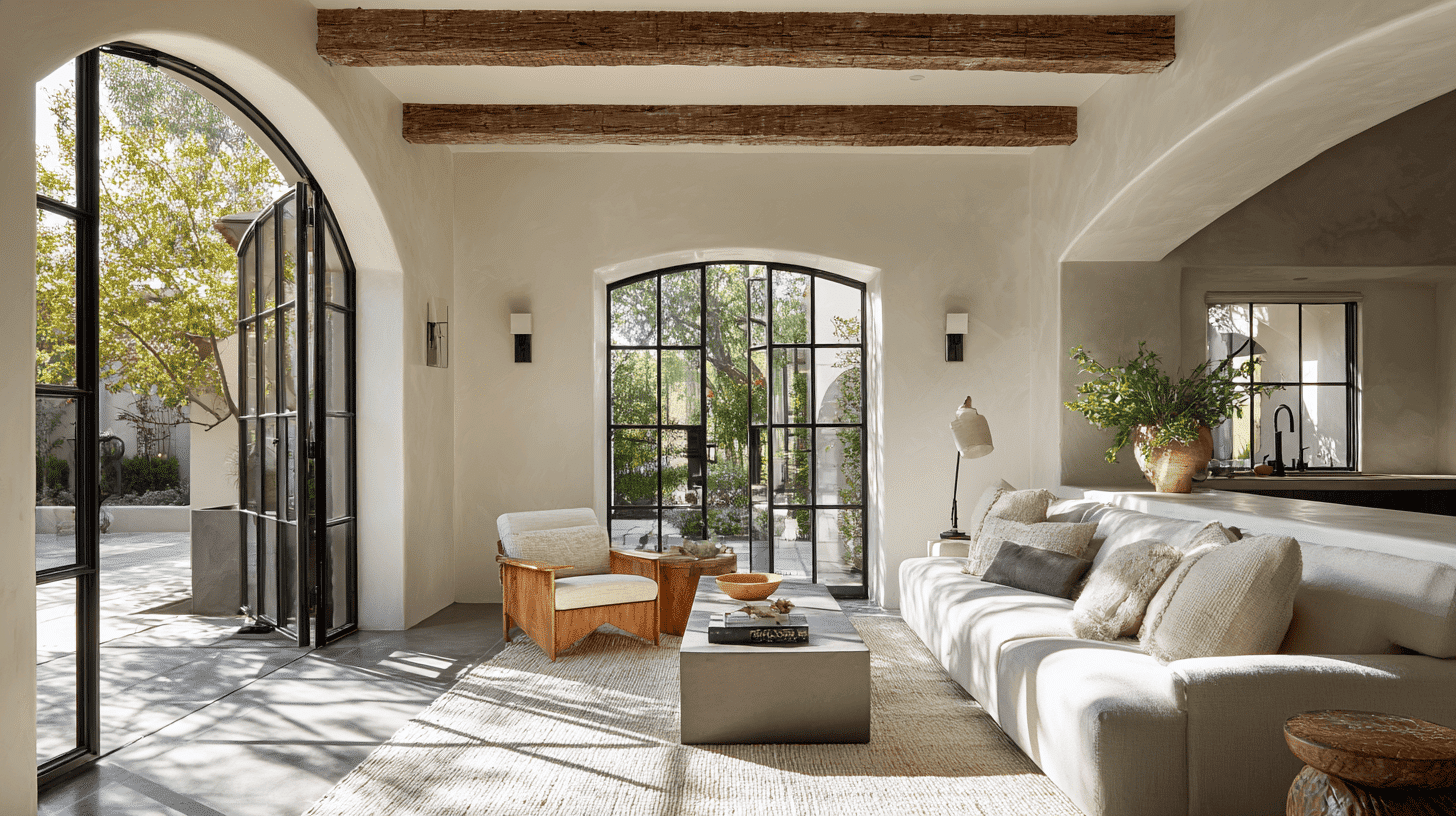
Modern versions mix tradition with clean, updated layouts for today’s lifestyle.
- Open floor plans enhance space and natural light.
- Traditional arches and beams provide authentic character.
- Sleek finishes balance old-world charm with modern ease.
Trends in Spanish Architecture 2025
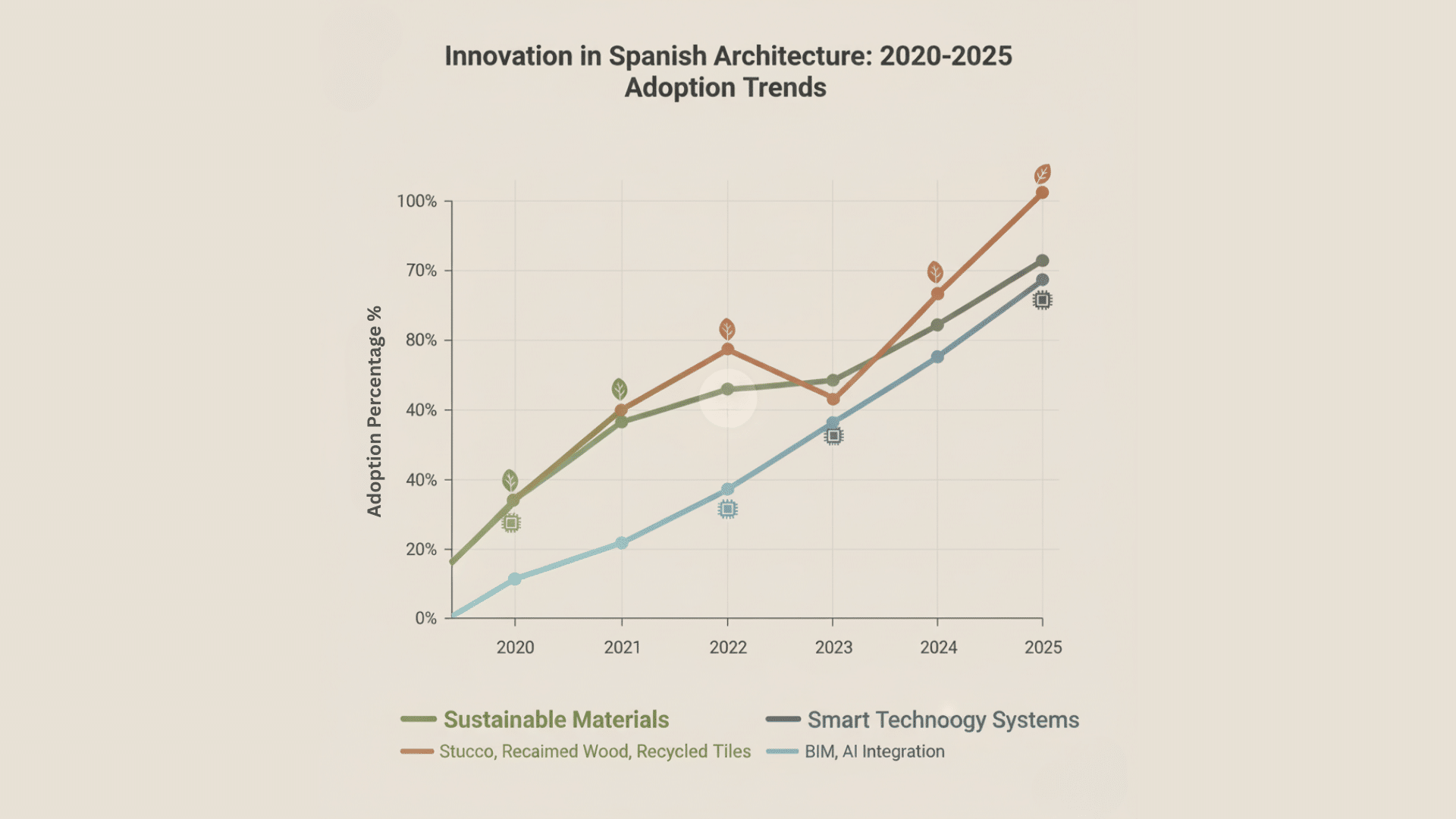
The architecture continues to evolve in 2025 by embracing sustainable and technology-driven innovations. There is a growing emphasis on using eco-friendly, locally sourced materials to minimize environmental impact.
Energy-efficient construction methods, paired with smart home technologies, are increasingly popular for enhancing comfort and functionality.
Biophilic design principles promote natural light, integration of plants, and a stronger connection to the surrounding landscape.
Additionally, the adoption of AI and Building Information Modeling (BIM) optimizes design accuracy and streamlines building processes.
Flexible interior spaces that cater to modern family lifestyles through adaptable rooms and multifunctional layouts further reflect current trends shaping Spanish architectural design
Product Inspirations for Spanish Architecture Homes
Spanish architecture emphasizes details and structure. Using products like rustic wood, terracotta, or hand-painted tiles helps homeowners add original charm to modern homes. Here are key ideas to bring this classic style home.
1. Stucco Exterior Finishes
Stucco walls are a classic hallmark of Spanish architecture. They offer a textured, sun-reflecting finish that provides durability and insulation, making homes cool and lavish.
2. Terracotta Roof Tiles
Curved terracotta tiles are instantly recognizable in Spanish design. They combine rustic charm with natural cooling properties, while also being weather-resistant and long-lasting.
3. Wrought Iron Railings & Balconies
Intricate wrought iron details adorn balconies, staircases, and windows in Spanish homes. Their scrollwork adds classiness, strength, and artistry that ties tradition with modern design.
Shop Wrought Iron Railings & Balconies at The Balcony Company
4. Ceramic and Mosaic Tiles
Hand-painted ceramic and mosaic tiles bring cultural richness into interiors. They’re often used in kitchens, stair risers, and patios, adding bold patterns and color to spaces.
5. Wooden Beams and Doors
Exposed beams and carved wooden doors are staples of Spanish homes. They introduce warmth and realism, making spaces feel both rustic and sleek.
6. Outdoor Courtyard Fountains
Courtyard fountains are a central element of Spanish design. They provide a sense of tranquility while enhancing open-air living spaces with artistry and tradition.
7. Colorful Textiles and Rugs
Handwoven textiles and rugs soften interiors, adding artisan detail to Spanish homes. Their earthy colors and vibrant patterns complement terracotta floors and rustic walls.
8. Vintage-Style Lighting Fixtures
Lanterns, sconces, and chandeliers in wrought iron or bronze highlight Spanish interiors. They provide warm light and character, balancing classiness with rustic charm.
Tips for Incorporating Spanish Architecture Elements in Homes
Bringing original Spanish architectural elements into your home adds classic beauty and cultural richness. Here are practical tips to infuse your space with Spanish charm:
- Use plaster walls, terracotta tiles, and exposed wood for traditional textures.
- Opt for earthy neutral colors enhanced by vivid, hand-painted accent tiles.
- Incorporate arches, columns, and open courtyards to reflect classic Spanish design.
- Choose furniture and accents in wrought iron, rustic wood, and traditional ceramics.
- Landscape with cypress trees, olive groves, tiled pathways, and Mediterranean-inspired plants.
Even subtle details like iron light fixtures or tiled staircases can beautifully evoke Spanish style in modern homes.
Wrapping it Up
Spanish architecture shows the story of many cultures, from Roman builders to Moorish artists and later revival styles.
Its key features, stucco walls, red clay roofs, sunny courtyards, and handcrafted details, combine strength with beauty. These elements make the style both practical and artistic.
From large cathedrals to small homes, Spanish design balances history with comfort. It values light, open spaces, and a warm, welcoming feel.
This style continues to inspire architects and homeowners, keeping a link between tradition, culture, and modern living.

